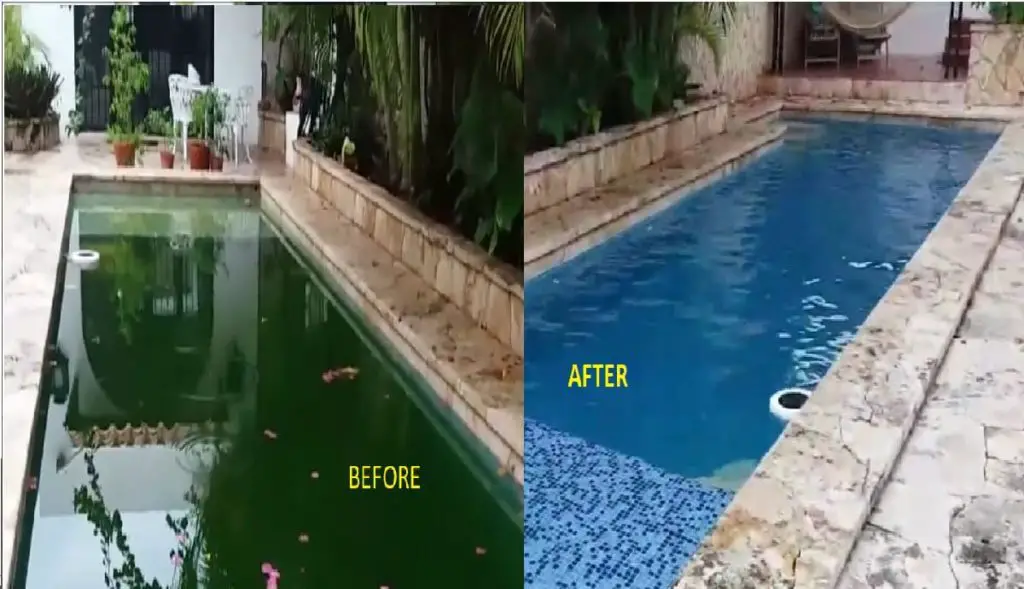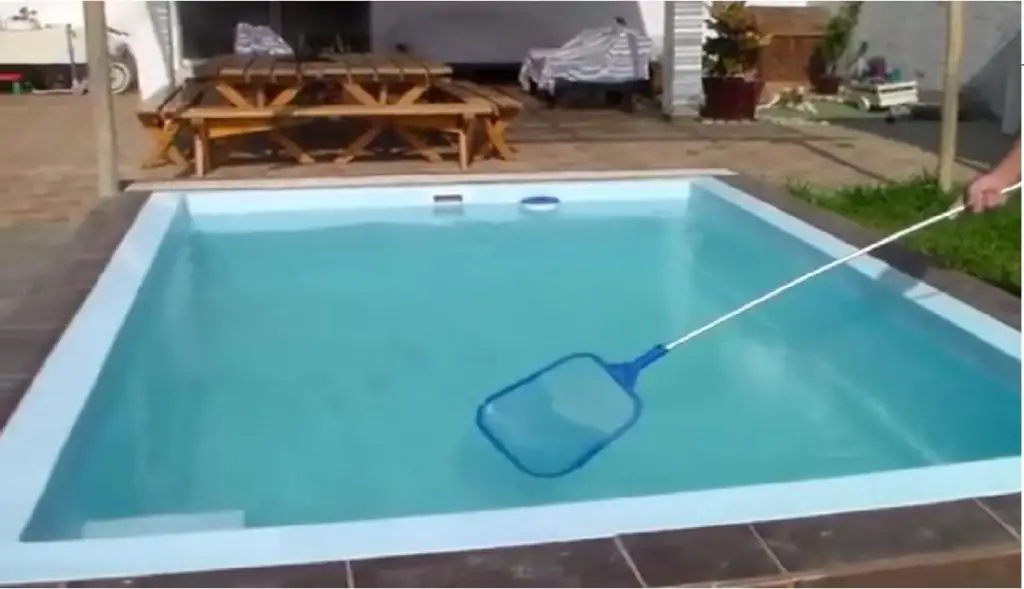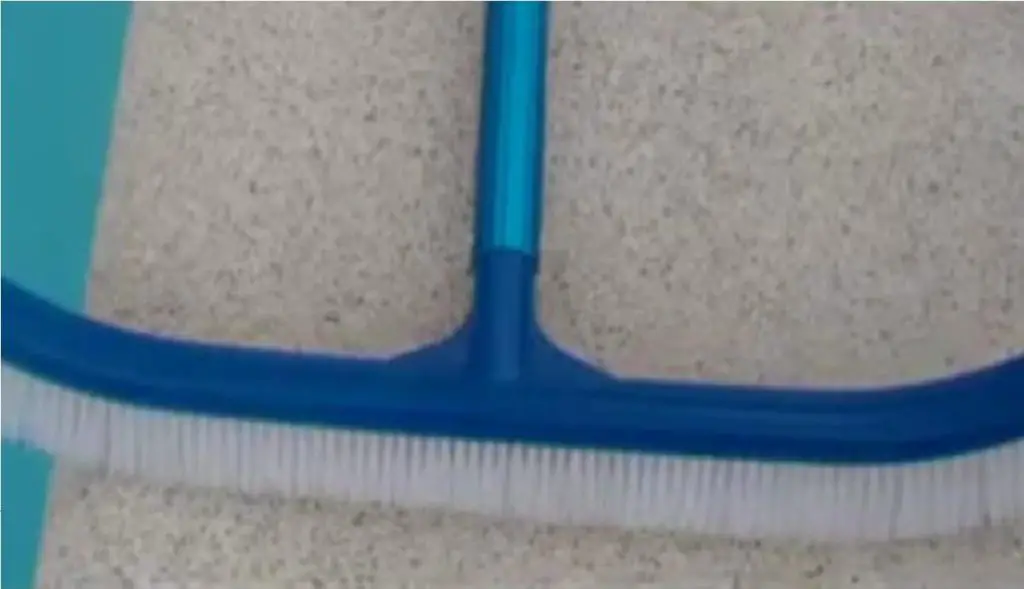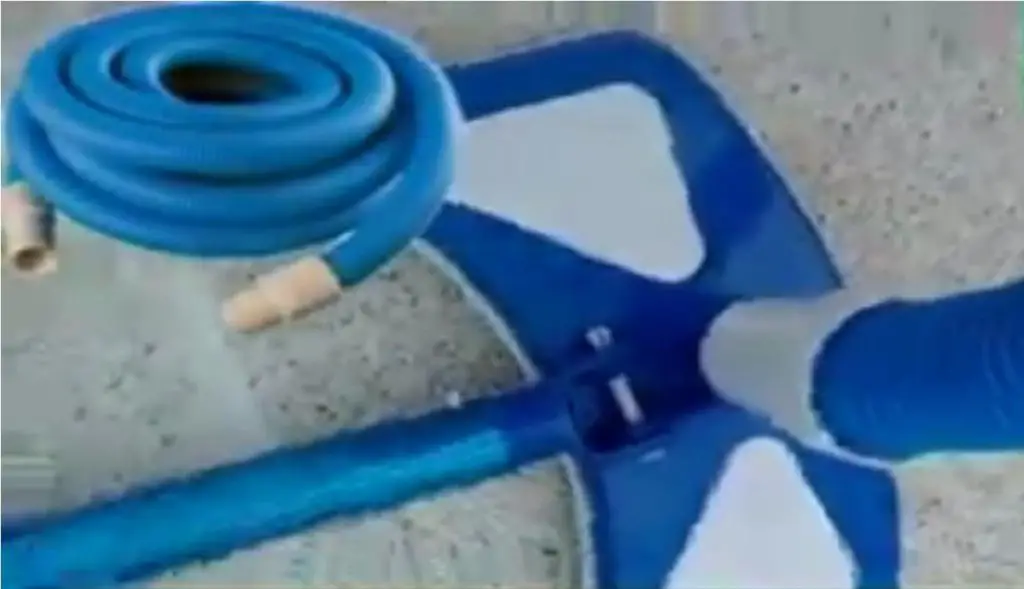This time we will verify how to treat the water of a pool that has turned green, and within the whole process we will answer the basic question of how to clean a green pool with bleach. I will show you what is the most effective, fast and economical way to treat your pool. I will also show you everything you will need to go from a totally green pool to a completely crystal clear pool and of course I will show you how to do it with or without having a pump to help you in this process.
There is a very common question in this cleaning process, and it is the following, is it better to treat the pool water? Or empty it, clean everything and refill it. The answer to this question depends on several factors: time, money and available resources. For small pools it is better to empty, clean and refill, but for pools with a large volume of water it is more efficient to treat the water. From a time point of view, the process of treating the water varies from 8 to 10 hours.

Among the recommendations I can suggest you, when you want to verify how to clean a green pool with bleach is the following: If the water in your pool has not been used for a long time, say more than a year, it is advisable to empty it, clean it and then refill it, since the chemicals used at that time have already lost their properties.
Taking all these aspects into consideration, we move on to the procedure of how to clean a green pool with bleach. The implements needed to perform this procedure are: A chlorine and PH measuring kit, PH reducing agent, a net to collect solids from the pool surface, a pool brush, you are going to use chlorine (dichloride in tablet or powder form, calcium hypochlorite, liquid chlorine) and lastly you will need flocculants or aluminum sulfate in powder or liquid form (I recommend powder as it is more effective).
– You should finish filling the pool completely, as a few centimeters of water are consumed in the process.
– Remove as many solid particles as possible with the collection mesh (leaves, bugs, dirt particles) from both the surface and the bottom of the pool. The reason for this is that if these particles are left behind the chlorine will act on them and reduce its effectiveness by clarifying the pool water.

– To brush well the walls and the bottom of the swimming pool, this is to detach the algae and that the chlorine eliminates them with greater facility and in addition so that the swimming pool is not slippery. If the bottom of the pool can be seen it means that the water, although it is green, it is not cloudy, for which we continue with the normal process leaving the chlorine to act for 2 to 4 hours, otherwise, if we cannot see the bottom it means that the water is cloudy and for this case we must leave the chlorine to act for 24 hours before continuing with the process.

– Then we must adjust the PH, normally in this process the PH of the water is high. The first thing to do is to measure the PH of the water which, ideally, should be at 7.2, this is to potentiate the effect of the chlorine and to be able to carry out the process in less time. In case of having a high PH, a PH reducer (such as hydrochloric acid) should be used. It is advisable to use the pool calculator application, to obtain the correct dilution and concentration according to the volume of your pool. Then pour the solution into the pool and stir well. After waiting for a few minutes, re-measure the PH. If it is not in the optimal range, repeat the process until you get it.
– Then prepare the chlorine solution, for this use the same application (pool calculator). Mix very well the proportion provided by the calculator in a bucket of water (this is to dissolve the chlorine in its entirety because if there are undissolved chlorine particles it can discolor fabrics and cause skin lesions). Then pour the well-dissolved solution around the perimeter of the pool and stir vigorously to disperse it evenly. The chlorine should then be left to act for 2 to 24 hours with the pool at rest. After one hour the chlorine level should be measured with our meter, the objective is to achieve a super chlorination and if it is not achieved the process should be repeated.
– In case your pool, in addition to being green, is also cloudy, it is advisable to use one or several trichlorine tablets (depending on the size of your pool) in a float to maintain the water chlorination level while the waiting time elapses.

– Then we proceed with the flocculant (aluminum sulfate). For this step we again use the pool calculator application and use the flocculant option. We fill in the necessary parameters for the calculation and thus obtain the amount of flocculant needed for our pool. Take a bucket of pool water, mix the flocculant for approximately 3 minutes until completely dissolved, and then add it around the perimeter of the pool. Mix well throughout the pool so that the flocculant solution is evenly distributed in all areas. After mixing and spreading the flocculant solution well throughout the pool, let it stand for at least 6 hours. The purpose of the flocculant is to precipitate to the bottom all the micro particles that cause the turbidity of the water. This will be seen as a sediment at the bottom after this time has elapsed.
– Finally, as a last step, the bottom of the pool is vacuumed. After vacuuming the entire pool it is necessary to wait a few more hours because when the bottom of the pool is vacuumed a portion of this dirt is removed and then precipitates again. After a second vacuuming your pool will be ready for use.

Conclusion
In the above procedure I show you How to clean a green pool with bleach. It is important to mention that to clarify your pool, chlorine is not enough, since this result is achieved with a system of chemical products acting together. As a first consideration we must evaluate the level of dirt in our pool, how cloudy it is and how green it looks (formation of algae in the water). As a first step after being clear about the elements to be used, we must remove all solid debris from the surface (leaves, branches, bugs, etc.). Sweep tenaciously the walls and bottom of the pool, measure and adjust the PH level of the water, apply chlorine to achieve the clarification and elimination of algae, apply the flocculant or aluminum sulfate to precipitate the macroparticles that cause the turbidity of the water and finally vacuum the bottom to remove and filter all the precipitated particles.
Keep in mind that each of these processes must be done according to the times specified above, and also the regulation levels of both the PH reducer, chlorine and flocculant must be calculated according to the parameters of your pool.
We hope that this procedure will help you to solve the problems related to the cleaning of your pool and that it will also be useful to minimize the costs to have your recreation area in optimal hygienic conditions and available to receive your visitors, friends and family.
